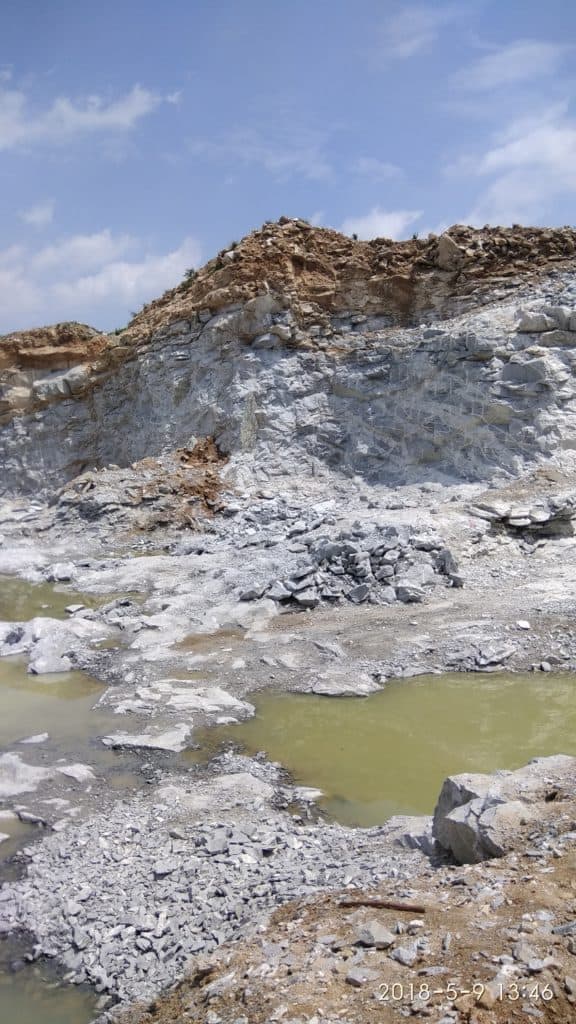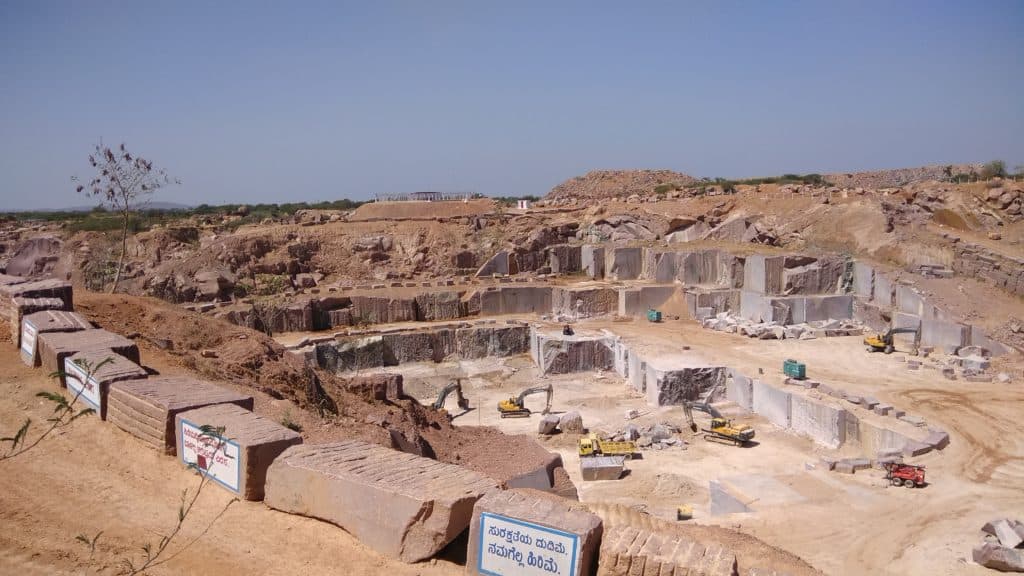One way to be aware of issues of impropriety and poor performance in local government bodies and departments is to track the audit reports from agencies like the Comptroller and Auditor General of India (CAG).
This article is the fourth of a series by experts from Indian Accounts and Audit Service.
A country’s socio-economic development is largely linked to the natural resources it possesses. With mineral resources being an important component. Karnataka has huge reserves of minerals like iron ore, limestone and gold among other natural resources, and its ranking based on mineral reserves and production capacity within India varies from 5th to 10th.
Illegal mining in Karnataka has been covered extensively in all media. It was also taken up by the Supreme Court and investigated by the Central Bureau of Investigation (CBI). But over the years, mining, both legal and illegal, has taken a toll on people, environment and health in both rural and urban areas.
For instance, rapid urbanisation the demand for granite in the form of ornamental building stone and construction material has increased leading to a huge spurt in quarrying.
Major environmental impacts of quarrying, as pointed out by researchers, are effects of blasting, alteration of natural terrain leading to soil erosion, blockage of natural drainage systems, loss of habitat for some fauna and flora species and decrease in ground water recharge. Additionally, occupational health and safety risks exist for quarry employees and nearby residents may experience vibrations and noise.
As per the Stone Crusher Regulation Act, stone crushers should be 8km away from the limits of Municipal Corporations and no quarrying is allowed within 200 mts of any residential area, national highway, roads, temple, schools etc. Several PILs regarding violation of the conditions prescribed have been filed by citizens in Bengaluru.

Read more: Quarries and factories causing respiratory problems in Bannerghatta
With a view to mainstreaming environmental concerns in mining activity, the Karnataka government inserted Chapter IIA, “Systematic, Scientific Mining and Protection of the Environment” into the Karnataka Minor Minerals Concession (KMMC) Rules, 2013.
The Office of Accountant General (E&RSA) Karnataka conducted a performance audit covering the period April 2014 – March 2018 to ascertain:
- Whether the Department of Mines and Geology (DMG) was adequately prepared for implementation of the new provisions relating to systematic and scientific mining in terms of infrastructure, human and financial resources, and technical know-how.
- Whether processes and controls relating to the approval of the Quarry Plans (QP), grant of Environmental Clearance (EC) and monitoring the implementation of the QP/EC conditions within the DMG and other related agencies were effective.
- Whether the new provisions relating to systematic and scientific quarrying were adequate for protection of the environment.
In addition to examining the records pertaining to various entities including the state/district Level Environment Impact Assessment Authority (SEIAA/DEIAA), Department of Revenue and the Karnataka State Pollution Control Board (KSPCB), the audit team conducted Joint physical verification (JPV) with officials of the DMG and engaged the Indian Institute of Science (IISc) and National Remote Sensing Agency (NRSA) as Technical Consultants.
Nine out of 31 district offices were selected for audit. These districts included 1,107 current quarry leases i.e. 1,046 Ordinary Building Stone/Granite and 61 sand quarry leases. Records of 201 stone crusher units in the selected districts were checked.
Important observations
During Joint Physical Verification, we observed the following irregularities:
- Quarrying in an area of 29,800 square meter despite the expiry of the Mining Lease in 52 cases.
- Quarrying outside the legal boundaries in 33 cases spanning over 46,000 square meters.
- Quarrying in 109 illegal sites accounting for over 1.07 lakh square meter.
Illegal extraction from the above sites had a revenue implication of Rs. 191.96 crore in terms of unrealized royalty and penalty.
With the help of the Technical Consultant (IISc) and the use of satellite imagery, we found:
- Quarrying beyond the legal boundaries in an area of 8.90 lakh square meters in 146 locations leading to illegal extraction of 27.68 crore MT of Building Stone, Sand and Granite.
- Illegal Quarrying in 532 sites in Chikballapur Taluk over 11.45 lakh square meters.
Receipts from mining include royalty, application fee, licence fee, permit fee, penalty, interest on belated payment of dues, etc. from lease holders. Though there was an accelerated growth in turnover of the mining companies involved, there was no upsurge in revenue from royalty.
The lease holders were required to enter production details through the E-Permit System (Software Package) and apply online for a MDP (Mineral Despatch Permit). However, vehicle movement without valid MDP was noticed. These offenders were not brought to account resulting in loss of penalty at the rate of five times the royalty. Further, the vehicles were not seized. A case was noticed in Hassan District, where 57.05 MT of Building Stone was transported without MDP. The Department’s records in Hassan District also showed that 9,947 vehicles had transported 1,69,109 MT of Ordinary Building Stone without MDP whereas the number of vehicles caught on road without MDP during that period was only 469. The lack of enforcement would certainly act as an incentive for repeated violations.

Read more: Illegal construction in Chennai: Where are the rules and whom can one report to?
The department deviated from the principle of developing/operating a mine after Cumulative Impact Assessment and notification of clusters (group of quarries). As a result, individual environmental clearances were granted to individual quarries though an individual quarry is not an appropriate method of estimating adverse effects on the environment.
Mining operations were taken up without obtaining information/permission from Karnataka State Pollution Control Board (KSPCB). None of the quarry lessees had submitted compliance reports regarding the air and noise pollution levels to SEIAA (State Environment Impact Assessment Authority).
As per the Explosives Act, lease holders are to obtain permission for use of explosives in quarries. Permissible Peak Particle Velocity (PPV) limits are prescribed so as to avoid damage to surrounding structures. However, no schedule of blasting activity was prescribed in quarry areas to minimise ground vibrations. Neither did the department’s field offices have the equipment to measure the blast vibrations.
Lack of sufficient human resources impaired the implementation of the policy significantly. The vacancy position in respect of Senior Geologists/Geologists and Junior Engineers was 66%. If the audit could, through joint physical inspections, identify 194 incidents of un-authorised quarrying in six districts over 29 days of inspection, it is certain that the magnitude of illegal quarrying activities is much higher and requires immediate attention from the department concerned.
A study was conducted by the Technical Consultant (IISc) to scientifically assess the volume of OBS (Ordinary Building Stone) extracted from the lease areas in Chikkaballapura District. IISc estimated the volume using current satellite images of lease areas and the topography images from the National Remote Sensing Centre (NRSC), Hyderabad. Field visits in sample cases were also used to corroborate the findings from the satellite images. It emerged that the quantity assessed by the department was hugely understated. For instance, in 173 leases, extracted OBS estimated by the department was 0.96 MT whereas the IISC estimated 38.42 MT.
Audit also noticed that the lease holders dump waste generated by mining, outside the mine lease area, which has resulted in degradation of the environment.
The Government acknowledged the findings and accepted the recommendations included in the Audit Report placed in the assembly on October 10th, 2019. The full report can be accessed here.
[The authors are from the Indian Audit and Accounts Service. Views are personal.]